FFT & Image Data
CS 481/681 2007 Lecture, Dr. Lawlor
Here's where I should explain to you how the FFT works. But I'm
going to cheat and just point you to Paul Bourke's excellent pages:
- First, the FFT itself,
in 1D and 2D. His explanations are awesome, but his code isn't
very fast, mostly because of the divide-by-n at the end. If you
replace this with a multiply by 1.0/n, it's actually within a factor of
two or three of the really fast FFT implementations like the "Fastest Fourier Transform in the West", fftw
(which I use in my code). Be aware he puts the (0,0) frequency
(DC coefficient) in the *middle* of his images, but it's more common to
compute this at the outside corners.
- Second, the FFT for image filtering.
Bottom line is that "low pass" filters let through only the long
low spatial frequencies, giving blurring; "high pass" filters let
through only short high-frequency components, giving edge
detection. Note the "filters" on the left in the examples are in
freqency domain--these are the values multiplied by the image's
FFTs. There are often more efficient ways to do blurring, however!
- Finally, the FFT for image matching. Paul Bourke has some examples of this, but they don't seem very clear to me, so I'm explaining it below.
FFT Image Matching
The basic task in image matching is cross-correlation,
which is just taking the product of two images at various shifts.
This routine would return pixel (dx,dy) of the correlation image:
float correlation_image(int dx,int dy, image &a,image &b) {
float sum=0.0;
for (int y=0;y<a.ht();y++)
for (int x=0;x<a.wid();x++)
sum+=a.at(x,y)*b.at(x+dx,y+dy);
return sum;
}
The idea is that once we finally figure out the offset (dx,dy) that
lines up the two images, the bright parts of a will match up with the
bright parts of b, and the value in the correlation image will be large.
We can use the FFT to do "fast convolution"--we can compute all the
pixels in a correlation image by complex-conjugate-multiplying the
FFT'd versions of images a and b:
/// ... fill imgA with the search image, and imgB with the chip to search for ...
fftwf_execute(imgA_fwfft);
fftwf_execute(imgB_fwfft);
for (y=0;y<fftH;y++)
for (x=0;x<fftW;x++) {
fcpx a=imgA.at(x,y);
fcpx b=imgB.at(x,y);
fcpx c=(a)*std::conj(b); /* complex multiply a by the complex conjugate of b */
imgC.at(x,y)=c;
}
fftwf_execute(imgC_bwfft);
/// ... imgC is the "correlation image": pixel (dx,dy) is the product of imgA with imgB shifted by (dx,dy)
There's only one problem with this--it works like crap!
When searching for this imgB:
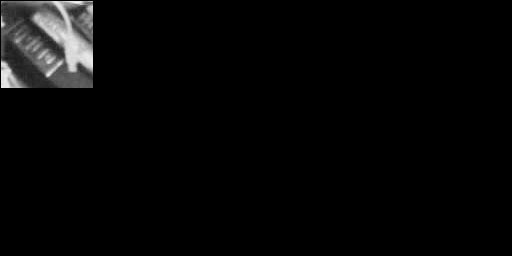
Here's imgA (the image to search in) and imgC (the correlation image):
imgA (search image)
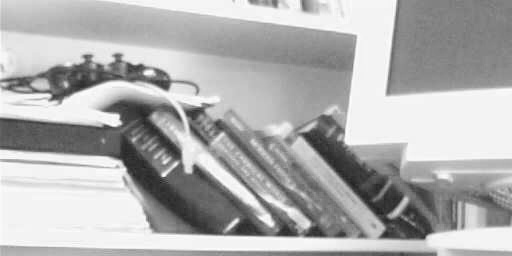
|
imgC (correlation image)
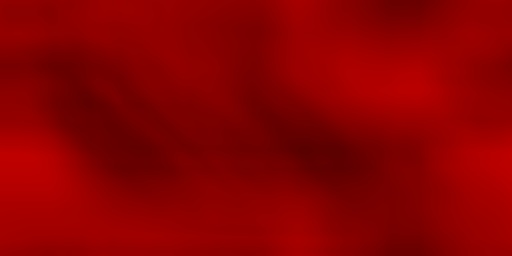
|
Notice how the correlation image has many bright areas--it's not at all clear where the heck the image matches here!
However, if we do a high-pass (edge detection) filter on the incoming
images, for example by zeroing out all the low FFT frequences, we get
far sharper correlations. Here's the code:
/// ... fill imgA with the search image, and imgB with the chip to search for ...
fftwf_execute(imgA_fwfft);
fftwf_execute(imgB_fwfft);
for (y=0;y<fftH;y++)
for (x=0;x<fftW;x++) {
fcpx a=imgA.at(x,y);
fcpx b=imgB.at(x,y);
fcpx c=(a)*std::conj(b); /* complex multiply a by the complex conjugate of b
// Apply high-pass edge detecting filter
int fx=x; if (fx>(fftW/2)) fx-=fftW;
int fy=y; if (fy>(fftH/2)) fy-=fftH;
float r2=(fx*fx+fy*fy); // square of radius: discrete frequency bins
if (r2<128) c=0; // zero out low frequencies
imgC.at(x,y)=c;
}
fftwf_execute(imgC_bwfft);
/// ... imgC is the "correlation image": pixel (dx,dy) is the product of imgA with imgB shifted by (dx,dy)
And here are the resulting images. Note the strong correlation peak where the book image lines up:
imgA (search image)
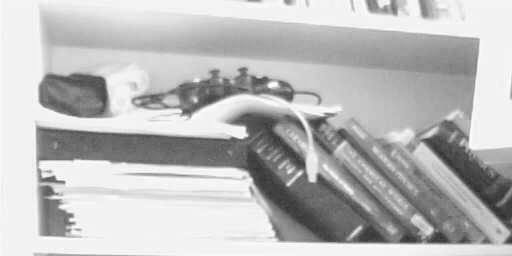
|
imgC (correlation image)
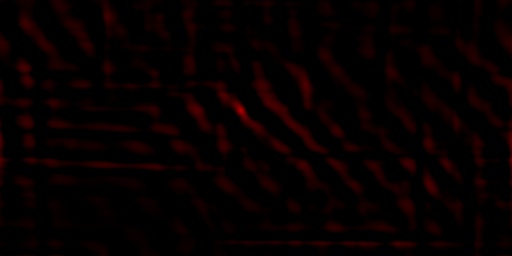
|
Now we can handle a small leftward translation.
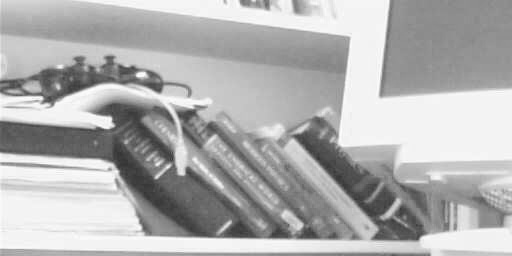
|
Note the shifted correlation peak.
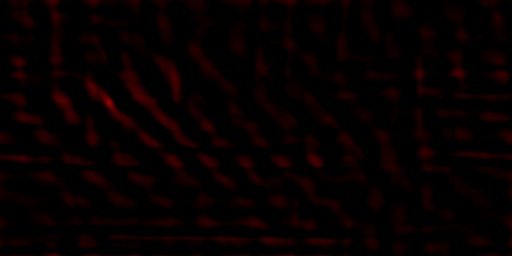
|
Translating to the right.
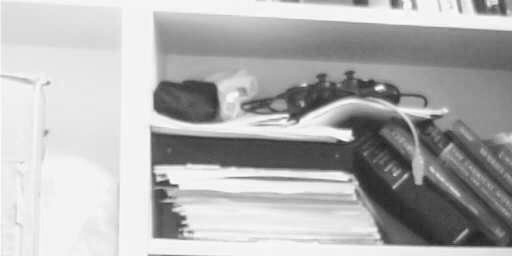
|
Note the shifted correlation peak.
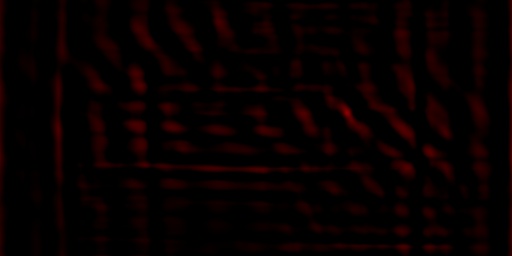
|
Obscuring part of the search image.
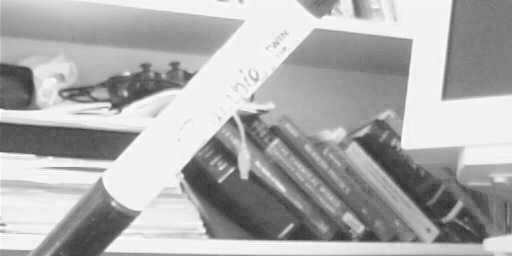
|
We still get a nice correlation peak.
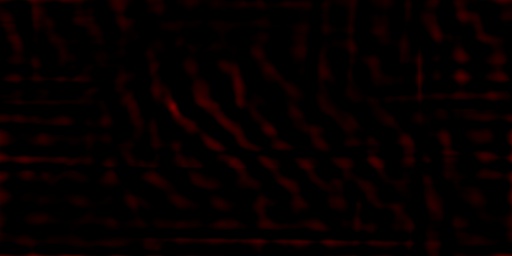
|
Rotating the search image slightly (5 degrees or so).
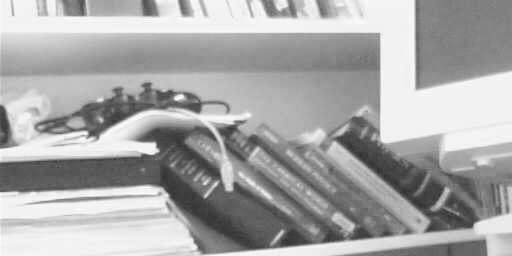
|
The peak is wider, but still there.
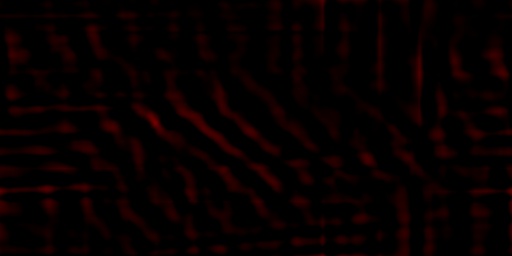
|
Rotating the search image more (15 degrees or so).
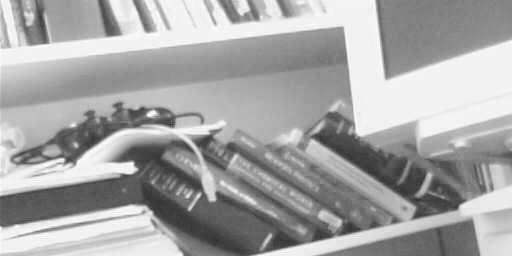
|
The peak is now gone--correlation can't deal with much rotation.
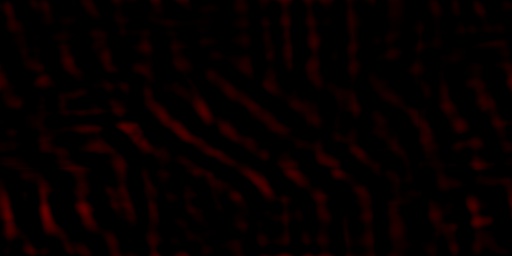
|
Searching an unrelated image.
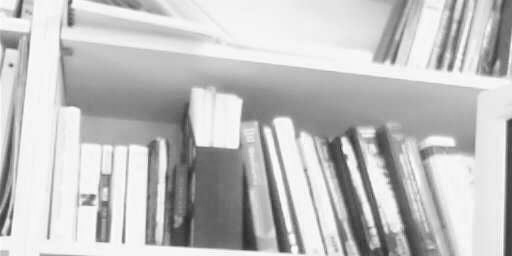
|
Now there are many peaks--"false correlations".
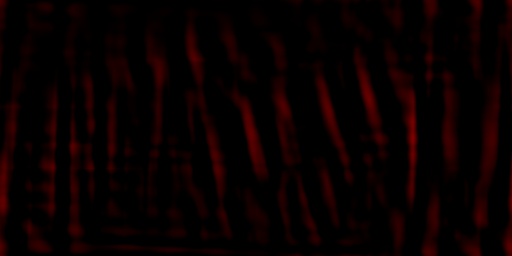
|
The bottom line is that image-to-image correlation is a powerful technique that can be used for:
Oh, and the cheap way to locate stuff in images is just to paint it hot pink.


















